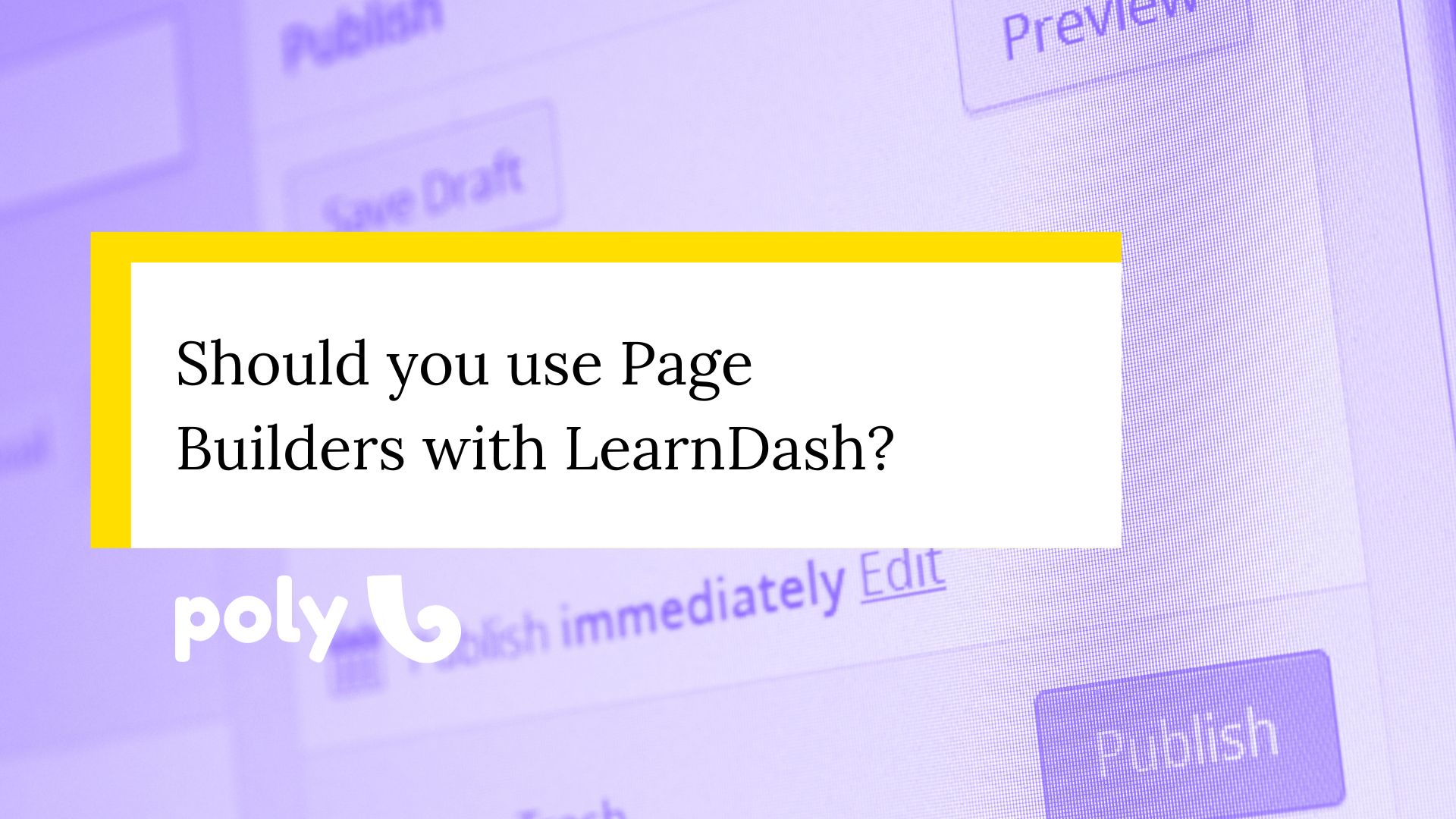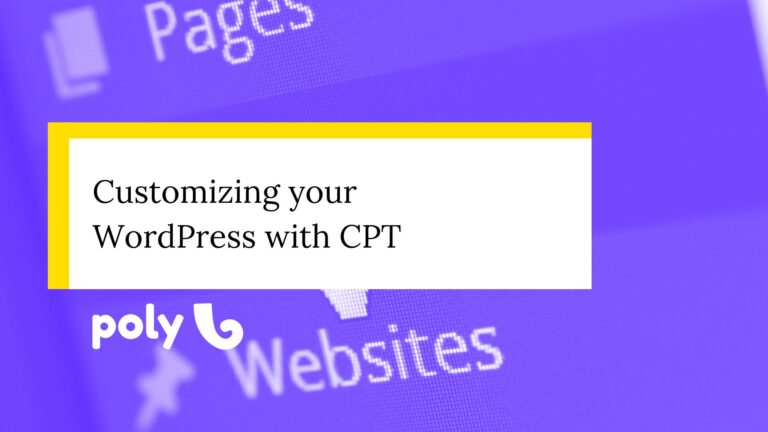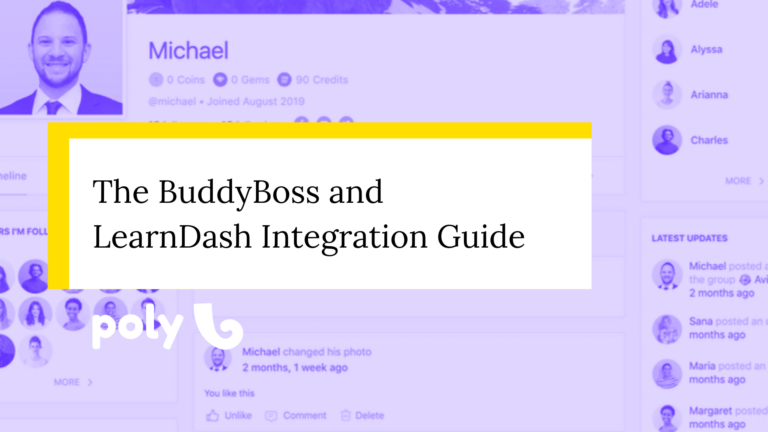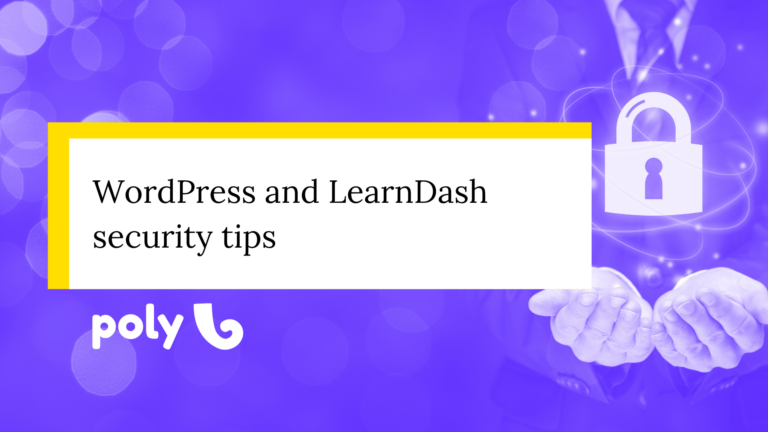How to use page builders with LearnDash
Building a website from scratch is not easy, even if it comprises simple pages, let alone an entire LMS. However, doing so with WordPress becomes a fairly easy task, especially for people who don’t know how to code.
Thus, building with WordPress eases the task by a lot, not only because of its massive library of templates and plugins but also because of its built-in builder, the Gutenberg editor.
Though it’s very efficient and capable of building somewhat complex structures, it has its limitations. That’s why we have page builders, add-ons (plugins), and, in many cases, themes that enable you to create even more complex and beautiful pages.
Page builders have been a staple in the WordPress community for years, even before the event of the Gutenberg editor. However, they should be used with caution when creating an LMS. I’ll explain now why.
What are Page Builders?
Page builders are powerful tools that simplify designing and customizing websites on platforms like WordPress. They provide an intuitive drag-and-drop interface, allowing users to create web pages without any coding knowledge. With page builders, you can easily design and structure your content, add multimedia elements, and customize the layout of your site with ease.
One key benefit is adding colors, filters, special effects, transitions, and more without knowing CSS. That way, you can create beautiful pages without needing a developer. It also allows you to edit the content and its appearance whenever you want. Also, while you can build things from scratch, there are many website and page pre-made layouts out there for you to reuse and edit to suit your brand.
Finally, page builders allow you to create page templates that can be applied to several pages at once without the need to edit page by page. This is useful when working with post types.
Here are some of the most popular page builders:
- Elementor: Known for its versatility and extensive widget library, Elementor is a top choice for building LearnDash courses with a polished look.
- Divi: Divi offers a wide range of pre-designed templates and modules, making it a great option for LearnDash users looking for quick and easy customization.
- Beaver Builder: This lightweight builder is easy to use and integrates smoothly with LearnDash, making it an excellent choice for educators who want a user-friendly solution.
Even though they are great solutions and certainly something you may install in your website, using page builders with your LearnDash comes with some caveats. Let’s explore those.
When you should not use page builders with LearnDash.
Before we begin, understand that LearnDash has many moving parts and dynamically generated content, so you don’t add them yourself. These include the course title, lessons’ title, join/purchase course buttons, progress bars, and whatnot.
LearnDash offers many widgets/blocks and shortcodes for you to add to your pages using the Gutenberg editor, but many dynamic content may not be available in your page builder. The only page builder with such integration is Elementor.
Also, it’s essential to understand that LearnDash offers two methods for managing course pages and content: with focus mode deactivated or activated. This distinction is crucial because if you don’t activate it, your theme will manage almost all the pages for your courses. Normally, your theme will manage the course pages’ general appearance.
If you enable Focus Mode, your site’s usual header, sidebar, and footer will be replaced by LearnDash’s course progress, previous/next lesson buttons, and similar features. Most page builders cannot edit these. However, you have complete control over the lesson, topic, and quiz content.
That being said, page builders should not be used inside your lessons’ content.
Instead, use only their template builder to style how you want the courses’ main page to look, and other pages for two reasons: website performance and future customizations.
Page builders are notoriously heavy plugins that demand a lot from your server and website capacity. So adding it to your website will inevitably have an impact, no matter how many selling points the page builder’s marketing campaign states that it’s optimized for speed. Adding it to every lesson or topic will only increase the burden.
Second, you may want to change your website’s appearance or brand. Thus, you must go back to every lesson where the page builder was loaded and change it manually, which can be time-consuming.
When you can use page builders in a LearnDash-powered website.
Page builders are great for editing pages not part of your course core content, such as the lessons, topics, and exercises. You can use it to create page templates for your courses’ landing pages, hot sites, and every other page on your website. You can even use LearnDash’s shortcodes to display dynamic content (shortcodes are supported by all page builders).
We’ve mentioned keeping the marketing and learning websites separate, but here’s the same advice: if you can, use page builders on your marketing website and keep the LMS as simple as possible to avoid unnecessary plugins and page load.
In conclusion, using page builders with LearnDash is fine. Still, you have to consider the possible drawbacks in terms of performance and rework you’ll have to do eventually. If anything, try to keep usage to a minimum, and you’ll be fine.








